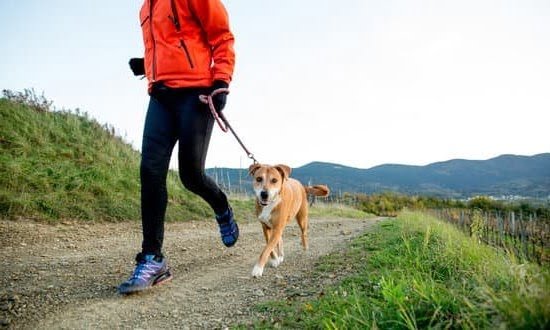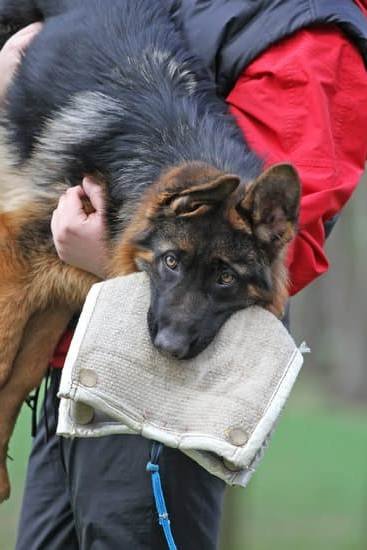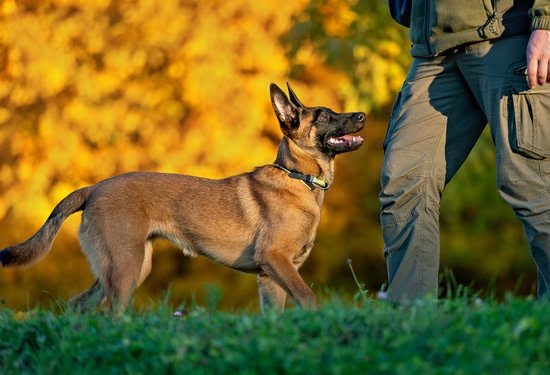Introduction
Training a dog not to whine for food is an important skill for many pet owners to learn. Whining can be irritating and disruptive, but it can also be a sign of anxiety or boredom in a dog. Teaching your pup to communicate with you effectively and avoiding any reward for inappropriate behavior is a big part of successfully dealing with incessant whining.
First, it’s important to find out why your pooch may be whining in the first place. If they’re feeling anxious or stressed, this could lead them to whine as they anticipate getting food or treat faster by doing so. To combat this behavior, you should aim to structure the environment so that it meets all your pet’s needs -exercise, mental stimulation, and companionship- in order to prevent any discomfort or distress.
Second, create a stable routine for mealtimes if possible. By doing this, you can ensure that there is predictability within their eating times which should help reduce any feeling of frustration from waiting too long between meals. Additionally, make sure that the mealtime environment is calm and relaxed; avoid putting yourself into a situation where you become frustrated if the pup is whining persistently and instead adopt techniques such as ignoring them until they stop or walking away from the area if necessary.
Thirdly, use positive reinforcement methods when helping your dog learn how to control its level of excitement during meal times; offer verbal praise when they demonstrate good behaviors like sitting calmly at the table or simply being patient while waiting for their food bowl to arrive at the table. Additionally, consider providing distractions (like chew toys) during moments of anticipation when there might usually be an outburst of whining; this not only gives them something else constructive to do but reinforces good behaviors by offering rewards even after those special moments have finished.
Reasons Why Dogs Whine for Food and How to Deal with It
Dogs often whine for food when they are hungry. This is a way of communication that dogs use to express their needs and cravings. In most cases, the best solution for dealing with this is to train your dog in a way that prevents the behavior from occurring in the first place. Here are some tips on how to train your dog to stop whining for food:
1. Feed your dog on a consistent schedule – Dogs thrive on structure, so having them stick to a feeding routine will help keep them from getting overly excited and demanding food. Establishing regular times for meals can also help avoid confusion about when it’s time for him to eat.
2. Don’t give into his begging – If your dog starts whining or barking, ignore him until he stops. Giving him food whenever he whines reinforces the action and makes it more likely that he will continue trying it in the future.
3. Enforce positive reinforcement – Reward good behavior with treats or praise whenever he obeys your commands without whining or barking. This will teach him that being quiet is rewarded, thus encouraging good behaviors and discouraging bad ones such as whining for food.
4. Ignore any misbehavior around food – If your dog misbehaves while you’re feeding him or showing signs of anxiety, simply get up and leave the area until he calms down and gives up his fussing completely before returning to feed him again, even if it takes a few tries. This reinforces that pleading through whining does not work and can eliminate the problem quickly if determinedly practiced over time.
5 Consistency is key – Be sure to be consistent every single time when it comes to training your pet and enforcing rules about behavior around food so he knows what is expected of him and understands why certain behaviors are unacceptable, so as not to become confused or frustrated due to sudden changes in expectations from humans which never leads anywhere constructive nor desired by any party involved!
Offering Positive Reinforcement
It is important to use positive reinforcement when training a dog to stop whining for food. One of the best ways to do this is by rewarding the dog with rewards and treats after it behaves positively. This will help encourage your pup to repeat certain behaviors when she wants something instead of resorting to whining. After each desired behavior, provide a reward like petting, verbal praise, or a treat. Doing this often enough can help create an association that misbehaving will not lead to getting what she wants.
It may help to incorporate hand signals into the reward system as well so that you dog understands specifically what action she performs which results in a reward. For example, if your dog whines for food and then stops once you say ‘no’ offer her positive reinforcement in the form of a hand signal followed by verbal praise and a treat. Your pup should start associating the action of stopping whining with receiving the reward and over time they’ll understand that this behavior won’t lead them anywhere. Additionally, it’s important not to shout at or scold your pet while they are exhibiting unwanted behaviors since this can make them more anxious and prone to whining in future situations. It also helps if you make sure to give adequate attention, exercise and stimulation throughout the day so your pup doesn’t feel overwhelmed or stressed about wanting food or affection during certain times of day.
Establishing and Maintaining Consistent Boundaries
One of the keys to training a dog to stop whining for food is to establish clear boundaries and maintain consistency during meal times. This means having clearly defined routines for when and how your pet should be fed. For instance, if it’s two in the afternoon and you’ve decided that this is when your pet should get his meal, feed him then regardless of how much he fusses or whines. Make sure that you stay firm with this routine; do not give in if the dog attempts to convince you otherwise with bouts of crying or barking. Additionally, make sure everyone else in the home is aware of these standards as well and enforces them. It’s important that these rules are consistent so your pup learns that meals should only be eaten at predetermined times and not between other activities throughout the day.
Providing Effective Distractions When Dogs Are Whining
Distractions can be a great way to keep your pup focused and reduce their whining for food. When your dog starts to whine for food, take them outside, teach them a new trick or play a game with them instead. Some ideas to engage in with your pup include training them basic commands like “sit”, “stay” or “paw”, teaching them to fetch or play tug-of-war. You can also practice agility tricks such as weaving between your legs and over objects or jumping over various objects. These activities will give them something else to focus on, as well as create positive associations between food time and fun activities. Additionally, you can introduce new toys every now and then so that they have something new and exciting to explore during meal times. Make sure these activities are interactive, so that you are both having fun and creating positive memories. These distractions can help greatly reduce the whining when it comes time for meals.
Ignoring Unwanted Behaviors and Responding Appropriately
One of the best ways to train a dog to stop whining for food is to ignore any and all behaviors that suggest that your pup wants something from you. For example, if your pooch begins whining or barking at you in anticipation of a treat or other form of reward, do not immediately give them what they want. Rather, wait for calm and quiet behavior before rewarding that with a treat. If your pup begins to whine or bark again, repeat this process by waiting for them to be silent before offering a reward.
In addition to ignoring unwanted behaviors, it is also important to respond appropriately when your pup does exhibit appropriate behavior. For instance, if your pup stops whining and sits calmly, praise them with an affectionate pat or verbal praise such as “good boy/girl!” This will help reinforce the idea that sitting quietly will be rewarded while loud and disruptive behavior will remain unpunished. Of course, you should still be sure to offer treats or attention sporadically so as not to forget about them completely!
Training Through Repetition and Positive Experiences
Dogs can learn to stop whining for food through repetition and positive experiences. Start by feeding your dog at the same times each day, as consistency gives a dog an idea of when it’s expected to eat. When you give your dog its regular meals, use only one or two commands like “sit” or “down” before rewarding it with the meal. This will help bond the command words with calm behavior rather than jumping up and asking for food.
Once your pup is used to waiting its turn for meals, practice having your pup hold the wait command even after dishes are placed down. For example, if you tell your pup to sit and then place its dinner bowl down, make sure they don’t start eating until you release them. If they start whining or being too insistent, take away their meal immediately so they know that that kind of behavior won’t be rewarded. Instead, keep giving positives every time they’re successful in following commands before seeking food-related rewards. With consistent feedback over time, most pups are capable of learning self-control when it comes to dinner time whining!
Being Patient and Resilient in the Face of Challenges
Training a dog to stop whining for food is no easy task. It requires utmost patience and resilience from the trainer, as it will take time for the animal to understand the commands given and allow it to alter its behaviour. This process can be long and arduous for both the pet and its owner, so having an understanding of this is essential before any kind of training begins.
First and foremost, the most important thing a trainer can do is remain patient when their dog whines for food. Praise should be given frequently whenever they demonstrate the behaviours you wish them to display instead of whining. Refrain from becoming frustrated; doing so may ultimately hinder your progress with your pet due to them sensing your negative energy.
Successful training requires consistency on behalf of both owner and pet; this means setting regular feeding times every day in order to create a routine that becomes natural to everyone involved. Each feeding time must also include good behavioural reinforcement techniques such as rewards known as positive reinforcement. This can be in the form of treats each time they obey their commands or verbal praises.
It may also help if his/her space or environment are modified; providing places where there’s distraction may make it easier for your pup to focus on something else rather than craving food all the time by associating different activities with different locations within your home, such as playing with toys in one room while eating in another room, etc., can reduce excessive whining outbursts which can arise after meals.
As mentioned above, remaining patient throughout this process is essential since it takes time for dogs’ brains to grasp boundaries created by owners regarding acceptable vs unacceptable behaviours. It is admirable that you are seeking out ways to better train your furry friend – always remember that mistakes are part of learning, so don’t give up! With diligence, effort and a bit of luck, you will have successfully trained your dog not to whine for food any longer.
Recognizing and Rewarding Positive Behaviors
When training a dog to stop whining for food, it is important to recognize and reward positive behavior. You can begin this process by making sure the dog understands the appropriate cues that signal when they should come looking for treats or food, instead of just whining for it. This can be messages such as “come here” or “good dog”. Whenever your pet displays good manners, make sure to give them some kind of reward. This could be a small treat, verbal praise (“Good boy!”), plenty of cuddles, or even playtime. This will help your pup understand that behaving appropriately gets rewarded and keeps them from feeling neglected and unwanted whenever you’re busy with something else— which may have been why they began whining in the first place. Try to also remain consistent with your command cueing and rewards; if you don’t consistently reinforce these behaviors they won’t take hold long term. It’s best not to shout at an over-energetic pup because this could be interpreted by them as a sign of reward or acknowledgement — even if you don’t intend it to be so —and thus encourage more bad behavior in the future.
Demonstrating Patience and Kindness in Everyday Interactions
One of the most effective ways to train a dog to stop whining for food is by demonstrating patience and kindness in everyday interactions. This means making sure any negative or corrective behavior is done calmly and compassionately. Providing ample positive reinforcement is also key; when a dog does something correct, reward them with hugs, verbal praise, treats, or toys. Additionally, establish a routine for feeding that the dog can depend on such as offering meals at designated times throughout the day and refraining from giving into their begging behavior when they are not fed on their schedule. It’s important to remember that dogs may take some time to understand the new rules so remain consistent with your training methods. If there’s an occasional slip-up in mannerisms such as whining or excessive barking, don’t resort to punishing the animal but address it with gentle explanations of why it’s incorrect behaviour and gently lead them back towards desirable actions instead. Over time, your pup will learn what behaviors are for acceptable for receiving food and will minimise improper requests.
Conclusion
When it comes to achieving a healthy balance between discipline and love with your dog, the most important thing is consistency. Setting boundaries for your pet in terms of behavior, such as not allowing whining for food, is essential. At the same time, remember that animals are sentient beings and need just as much love and attention as any other living being. Find opportunities to give your pup extra physical affection whenever you can and practice positive reinforcement when they show progress. With valid expectations, routine boundaries and unconditional love, you will be sure to create a lasting bond of support and understanding with your furry pal.

Welcome to the blog! I am a professional dog trainer and have been working with dogs for many years. In this blog, I will be discussing various topics related to dog training, including tips, tricks, and advice. I hope you find this information helpful and informative. Thanks for reading!





